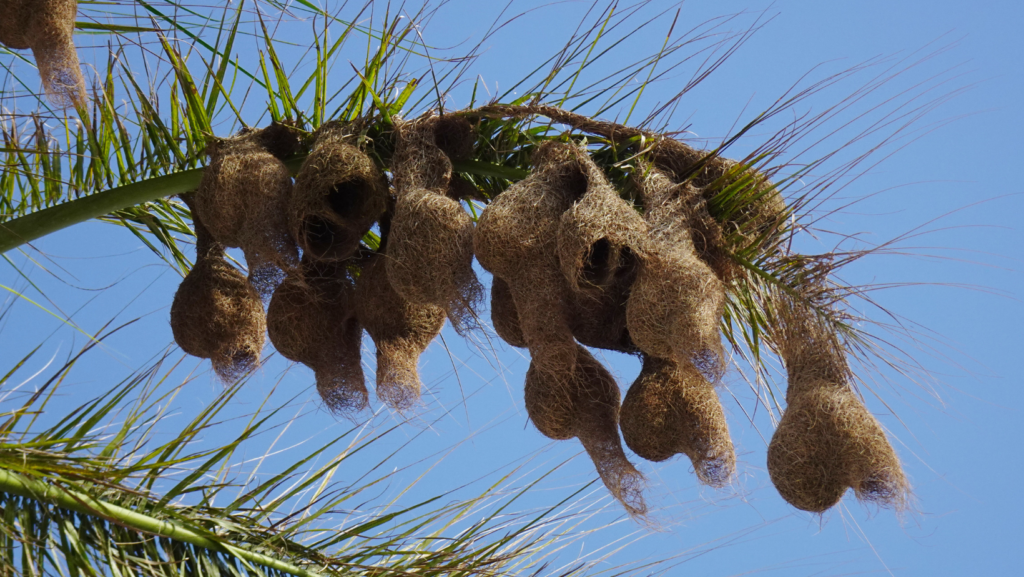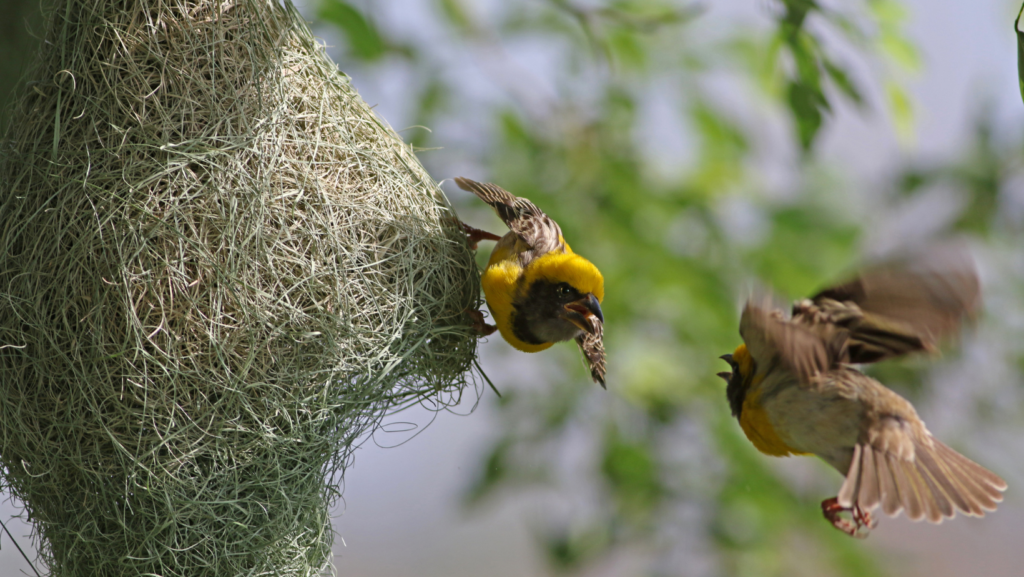Baya Weaver Bird: A Life Unfolding
Birth:

In the heart of South and Southeast Asia, the Baya Weaver Bird, scientifically known as Ploceus philippinus, comes into this world amidst the lush foliage and tropical landscapes. Born in intricate, hanging nests woven with precision, the Baya Weaver chicks emerge from delicate eggs, a promise of life in the vibrant world of the wild.
Grown Up:
As the days pass, the Baya Weaver chicks grow swiftly under the watchful eyes of their parents. The young birds inherit the distinctive yellow-green plumage characteristic of the species. The juveniles learn the art of weaving from their elders, practicing the intricate patterns that will serve as both shelter and cradle for future generations. In the bustling avian community, they form bonds and establish their place in the intricate social fabric of the weaver bird colony.
Life:

Life for the Baya weaver is one of perpetual activity. Living in colonies, these birds engage in communal activities such as foraging, socializing, and perfecting the art of nest-building. Their existence is intertwined with the cycles of the seasons, marked by changes in weather and the availability of food. The weavers are known for their acrobatic flight patterns and melodious calls that echo through the tropical landscapes they inhabit.
Food:
The Baya Weaver’s diet consists of a varied selection of insects, seeds, and grains. These resourceful birds are adept at foraging in the dense foliage, using their sharp beaks to extract insects from the leaves. During the breeding season, the birds also supplement their diet with fruits and nectar, ensuring they are well-nourished for the demanding tasks of nest-building and raising their young.
Reproductive:

The pinnacle of a Baya weaver’s life is often marked by the breeding season. Male weavers meticulously construct intricate hanging nests from long, thin strips of leaves, showcasing their skill to attract potential mates. The females inspect these nests critically, selecting the most finely crafted ones as a testament to the weaver’s ability to provide a safe haven for their offspring. Once a pair bonds, the female lays a clutch of eggs, and both parents take turns incubating them until they hatch. The cycle of life continues as the chicks grow, nurtured within the woven cradle, learning the art of survival from their watchful parents.
Death:
In the twilight of their existence, Baya Weavers, like all living beings, face the inevitable cycle of life and death. Predators, diseases, or the challenges of the environment may bring an end to their journey. However, the legacy of the Baya Weaver persists in the nests they’ve woven and the cycles of life they’ve perpetuated. Even in death, their contributions to the ecosystem endure, as their woven homes become shelters for other creatures, and the memories of their vibrant existence linger in the tropical landscapes they called home.
The life of a Baya Weaver Bird, intricately woven into the tapestry of the natural world, serves as a testament to the beauty and complexity of the cycles of life and the interconnectedness of all living things.

